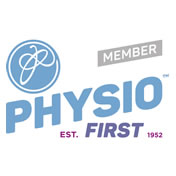Functional electrical stimulation (FES) is a technique that is used to stimulate muscle contractions by providing the nerves of paralysed muscles with small electrical pulses. It can be used for a number of neurological conditions where muscle weakness is caused by an interruption to the nerve supply to those muscles as a result of upper motor neurone lesions. The aim of FES is to bring about a muscle contraction that allows improved movement and function.
The use of FES is supported fully by evidence and research and also by N.I.C.E (National Institute for Health and Clinical Excellence). There are no adverse effects or risks from long term use, although some individuals may find the sensations the FES machine produces mildly uncomfortable at first.
How does it work?
 Small electrodes attached to the FES machine are placed over specific points along the nerve pathways that are to be stimulated. The intensity of the impulses is controlled by dials on the machine itself, to effectively stimulate the required nerves to produce a muscle contraction that allows the desired movement and function of that limb.
Small electrodes attached to the FES machine are placed over specific points along the nerve pathways that are to be stimulated. The intensity of the impulses is controlled by dials on the machine itself, to effectively stimulate the required nerves to produce a muscle contraction that allows the desired movement and function of that limb.
Although FES can be used to stimulate any peripheral nerve, it is most commonly used to improve an individual’s walking and lower limb function, for example where an individual has ‘foot drop’ as a result of their neurological condition.
To assist the correction of a ‘dropped foot’, the FES electrodes are placed over specific points on the common peroneal nerve and tibialis anterior muscle. Electrical impulses then stimulate the nerves to produce dorsi-flexion (where the foot and toes flex upwards) and eversion (where the foot moves outwards from the ankle) in order to allow the foot to clear the floor when the leg swings forward during walking. This prevents the toes and foot catching on the floor, a problem that many individuals with a neurological condition find frustrating, and one that can lead to tripping and falling. Improved muscle activity in the lower leg during walking helps to reduce the overall effort of walking and any spasticity, increases the speed at which an individual can walk and ultimately improves a person’s independence and quality of life.
Neurological conditions that FES can be used for include:
- Stroke
- Multiple Sclerosis
- Parkinson’s Disease
- Cerebral Palsy
- Hereditary Spastic Paraplegia
- Head Injuries
These conditions cause neurological compromise as a result of upper motor neuron lesions.
There are no restrictions as to how long a person may use an FES machine, so individuals may choose to use it as often as they need to, in order to experience improved function and to help with everyday activities. FES is designed to be used as a long-term walking and mobility aid, and is also used to support the rehabilitation of weakened muscles in other conditions that may have resulted in reduced muscle strength.
Neurological conditions causing lower motor neuron lesions (such as Guillain-Barre Syndrome, Motor Neurone Disease, and Polio), and those individuals with complete damage to the peripheral nerves are not suitable for FES use. The FES machine is also only suitable for individuals who are able to stand from sitting unaided and those who are able to walk for more than 10 meters (with or without assistance).
The specific FES machine used at Yorkshire Neuro Physiotherapy is the ‘Pace’ ODFS (Odstock Dropped Foot Stimulator), supplied directly to us by Odstock Medical Limited.
Our specially-trained Adult Neurological Physiotherapists and Paediatric Physiotherapists can assess and treat individuals, and our FES machine can be temporarily loaned to clients attending Yorkshire Neuro Physiotherapy for a longer trial period and home use, should this be considered appropriate following assessment.
Individuals, who then wish to purchase their own FES machine, may do so directly through us. Odstock Medical Limited will only deliver FES machines directly to Neuro Physiotherapy centres in order to ensure that a specifically trained physiotherapist will show their client how to use and care for the machine correctly and safely.





